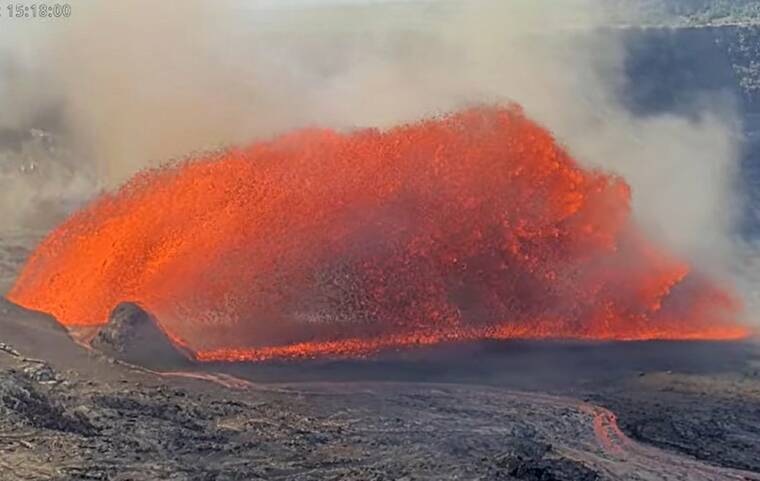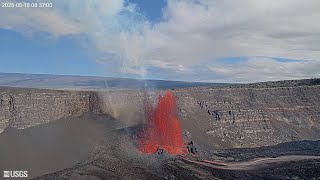1/2
Swipe or click to see more
USGS
Live view from Halemaumau crater from the southern rim of the caldera [V3cam]. This camera is a pan-tilt-zoom model and the view may change depending on activity.

2/2
Swipe or click to see more
U.S. GEOLOGICAL SURVEY
A screenshot shows lava fountaining from Halemaumau crater from the southern rim of the caldera this afternoon


Episode 31 of the ongoing Kilauea eruption began this afternoon, sending lava fountains shooting from Halemaumau crater as the Hawaiian Volcano Observatory warned residents about potential hazards.
The eruption started at 2:04 p.m., with fountaining from the north vent that reached roughly 100 feet high initially. Previous episodes have produced fountains over 1,000 feet and eruptive plumes as high as 20,000 feet above sea level, the HVO said.
All activity remains confined to Halemaumau crater within Hawaii Volcanoes National Park, and officials said commercial airports in Hawaii County are not affected. Winds from the northeast at 15 to 20 mph may push volcanic gas and fine particles toward areas south and southwest of the summit, according to the National Weather Service.
HVO said high levels of sulfur dioxide emissions — typically about 50,000 tons per day during eruptive episodes — may lead to vog forming downwind of Kilauea. Residents in affected areas are urged to limit exposure, especially those with respiratory conditions.
The eruption is also producing Pele’s hair, thin strands of volcanic glass that can travel more than 10 miles from the vent and cause skin and eye irritation. Drivers on Highway 11 near Hawaii Volcanoes National Park should use caution, as pumice and other fragments may fall on the roadway depending on wind conditions.
While lava flows are confined to the crater, HVO warned that hazards remain around Kilauea caldera, including unstable crater walls, ground cracking and rockfalls.
Don’t miss out on what’s happening!
Stay in touch with breaking news, as it happens, conveniently in your email inbox. It’s FREE!
This is the 31st eruptive episode since December 2024, with most previous events lasting less than a day and separated by several days of pause. The volcano alert level remains at watch, and the aviation color code is orange.
